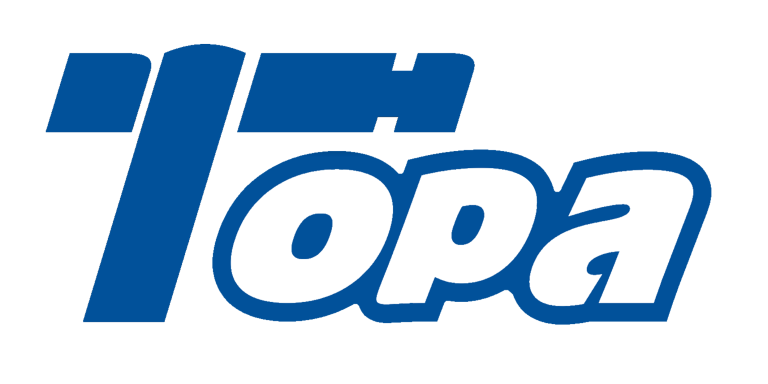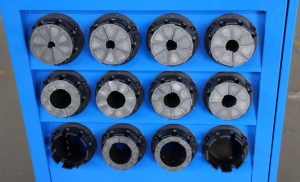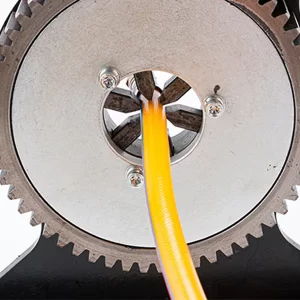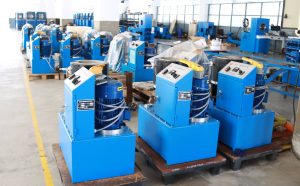Owning an in-house hydraulic hose crimper can transform how a business manages its hydraulic systems. This tool empowers companies to produce, repair, and customize hydraulic hoses directly on-site. But here’s the kicker: it drastically improves efficiency, cost control, and quality assurance. In this article, we’ll explore the many benefits of having an in-house hydraulic hose crimper. From operational advantages to financial savings, quality control, and flexibility, we’ll cover all aspects that make this investment valuable. Whether you’re a maintenance shop, manufacturer, or rental business, understanding these benefits helps you make smarter operational decisions.
1. What are the key benefits of owning an in-house hydraulic hose crimper?
Owning an in-house hydraulic hose crimper offers several crucial benefits that can impact your bottom line and operational efficiency. Ready for the good part? First and foremost, cost savings stand out. Instead of outsourcing hose repairs or replacements, businesses save on service fees and shipping costs by handling these tasks internally. This translates to direct monetary benefits, especially in high-volume environments.
Secondly, turnaround times improve significantly. Waiting days or weeks for external providers can delay projects and reduce equipment availability. With an in-house crimper, hoses are repaired or produced on-demand, minimizing downtime and keeping machinery operational.
Lastly, owning your crimper gives you better control over quality. You oversee every step of the crimping process, ensuring standards are met or exceeded. Custom specifications and urgent modifications become feasible without reliance on third parties.
For example, a construction equipment rental company reported a 30% reduction in downtime after investing in an in-house crimper. A hydraulic repair shop saw cost reductions of nearly 25% annually by eliminating outsourcing. And an industrial manufacturer improved hose quality consistency by bringing crimping in-house.
| Benefit | Impact | Example |
|---|---|---|
| Cost Savings | Reduced outsourcing fees | 25-30% annual savings |
| Faster Turnaround | On-demand hose repairs | 30% less downtime |
| Quality Control | Customized, consistent crimps | Improved reliability |
2. How does in-house crimping impact operational efficiency?
Having an in-house hydraulic hose crimper directly boosts operational efficiency by streamlining maintenance and repair processes. This is where it gets interesting: with immediate access to crimping capabilities, businesses reduce delays that arise from external service coordination.
For example, a mining company using external hose repair faced project delays averaging 5 days. After installing an in-house crimper, repair turnaround dropped to under 24 hours, allowing continuous operation. This improvement impacts productivity and profitability by minimizing costly downtime.
Moreover, in-house crimping simplifies scheduling and inventory management. Maintenance teams can quickly produce hoses tailored to immediate needs, avoiding overstock or waiting for parts delivery. Emergency repairs also become manageable, ensuring equipment uptime.
A manufacturing plant reported that integrating an in-house crimper into daily operations allowed faster response to unexpected hose failures, preventing production line stoppages.
| Operational Aspect | Improvement | Business Impact |
|---|---|---|
| Repair Turnaround | Days to hours | Increased equipment uptime |
| Scheduling | On-demand production | Reduced inventory waste |
| Emergency Response | Immediate hose replacement | Avoided costly downtime |
3. What financial advantages does owning a hydraulic hose crimper offer?
Financially, owning an in-house hydraulic hose crimper offers substantial benefits beyond simple cost avoidance. But here’s the kicker: the investment yields returns through lower repair costs, better resource utilization, and potentially increased revenue.
One major advantage is eliminating recurring fees paid to third-party hose suppliers or repair shops. Over time, these savings accumulate significantly. For instance, a logistics company calculated savings exceeding $50,000 annually by handling hose repairs internally.
Additionally, by controlling quality and turnaround, companies avoid revenue losses caused by equipment downtime. Faster repairs enable more operational hours, directly affecting profitability.
Some businesses also leverage in-house capabilities to offer hose crimping services externally, creating new revenue streams. For example, a maintenance contractor added crimping services to clients, increasing income.
| Financial Factor | Description | Example |
|---|---|---|
| Outsourcing Savings | Avoid service fees | $50,000+ annual savings |
| Downtime Reduction | More operational hours | Increased revenue |
| New Revenue | Offering crimping services | Expanded business offerings |
4. How does in-house crimping improve quality control?
In-house hydraulic hose crimping provides unparalleled control over quality standards. Ready for the good part? Instead of relying on external providers with varying quality levels, companies can enforce strict internal guidelines.
Direct oversight of crimping operations allows customization of hose lengths, materials, and crimp specifications to exact requirements. This reduces risks of leaks, failures, or warranty claims due to poor workmanship.
A large industrial firm reported a 40% drop in hose-related failures after transitioning to in-house crimping, attributing this to better quality assurance. Another manufacturer standardized crimping processes across all facilities to ensure consistent product reliability.
Quality control also involves operator training and regular inspections, which are more effective when performed internally.
| Quality Aspect | Improvement | Business Result |
|---|---|---|
| Custom Specifications | Tailored hoses and crimps | Reduced failure rates |
| Consistency | Uniform processes | Improved reliability |
| Inspection | Frequent quality checks | Early defect detection |
5. What flexibility does in-house hose crimping provide for businesses?
Owning an in-house hydraulic hose crimper gives businesses significant flexibility in managing their hose requirements. What’s the real story? Custom or urgent jobs become possible without delay or negotiation with third parties.
Companies can respond to changing demand volumes or specific client requests quickly. For example, a rental equipment company handled small batch hose orders overnight, maintaining customer satisfaction.
Emergency repairs no longer require external scheduling or transportation, critical for operations where downtime is costly. A construction firm highlighted how in-house crimping saved multiple projects from delays due to rapid hose replacements.
Additionally, modifications and adjustments can be tested and implemented immediately, supporting innovation and customization.
| Flexibility Type | Advantage | Real-World Example |
|---|---|---|
| Custom Orders | Quick turnaround | Overnight batch production |
| Emergency Repairs | Immediate action | Avoided costly project delays |
| Adjustments | Rapid prototyping | Improved product customization |
6. How does having an in-house crimper affect inventory management?
In-house hydraulic hose crimping reduces the need to stock extensive pre-made hoses, freeing up storage space and capital. This is where it gets interesting: businesses can maintain smaller inventories of raw hose materials and fittings instead.
Better inventory control reduces waste from unused hoses becoming obsolete or damaged. A manufacturing plant optimized inventory turnover by 35% after adopting in-house crimping.
Additionally, precise cutting and crimping reduce scrap and defective products. Inventory data from a logistics company showed a 20% decrease in hose material waste.
This streamlined approach supports lean management and just-in-time production principles.
| Inventory Aspect | Benefit | Example |
|---|---|---|
| Reduced Pre-made Stock | Frees up space and capital | Leaner warehouse operations |
| Material Waste | Minimized scrap | 20% less hose material wasted |
| Improved Turnover | Efficient stock management | 35% better inventory turnover |
7. What are the training requirements for operating an in-house hydraulic hose crimper?
Operating an in-house hydraulic hose crimper requires specific skills to ensure safety and quality. But here’s the kicker: proper training minimizes errors, damage, and downtime.
Operators need knowledge of machine controls, crimping standards, hose materials, and safety protocols. Certification programs often cover equipment operation, maintenance, and troubleshooting.
A maintenance shop reported that formal training reduced crimping errors by 50%. Another business found that ongoing education kept operators updated on best practices and compliance.
Investing in comprehensive training programs results in better machine longevity and fewer warranty claims.
| Training Area | Importance | Result |
|---|---|---|
| Machine Operation | Correct use | Fewer errors |
| Safety Protocols | Accident prevention | Safer workplace |
| Maintenance Skills | Prolonged machine life | Reduced downtime |
8. How does owning a crimper affect safety and compliance?
In-house hydraulic hose crimping supports better safety and regulatory compliance. Proper crimps reduce risk of hose failures, leaks, and workplace accidents. Ready for the good part? Controlling the process internally ensures adherence to industry standards and inspection requirements.
For instance, companies in the oil and gas sector follow strict guidelines that in-house crimping helps meet consistently. A logistics firm credited their safety record improvement to precise, compliant hose assemblies done on-site.
Safety culture strengthens as operators receive targeted training, understand risks, and follow protocols closely.
| Safety Aspect | Benefit | Industry Example |
|---|---|---|
| Proper Crimps | Reduced failures | Oil and gas compliance |
| Training | Accident reduction | Improved safety records |
| Regulatory Adherence | Inspection readiness | Transport sector compliance |
9. What are the challenges of managing an in-house hydraulic hose crimper?
While owning a hydraulic hose crimper offers many advantages, there are challenges. This is where it gets interesting: initial investment costs, ongoing maintenance, and staffing can pose hurdles.
Purchasing a reliable crimper requires capital, which may strain budgets. Maintenance demands time and resources to avoid breakdowns. Skilled operators must be trained and retained, which entails continuous education and oversight.
A small shop struggled with machine downtime due to limited maintenance expertise. Another business had high turnover of operators causing quality inconsistencies.
Planning for these challenges through budgeting, training, and maintenance schedules ensures sustainable benefits.
| Challenge | Impact | Mitigation |
|---|---|---|
| High Initial Cost | Budget constraints | Phased investment |
| Maintenance Needs | Downtime risks | Scheduled service |
| Staffing | Skill shortages | Comprehensive training |
10. How do businesses measure the ROI of owning an in-house crimper?
Measuring ROI involves analyzing cost savings, productivity gains, and asset depreciation. But here’s the kicker: accurate metrics provide a clear picture of the investment’s value.
Companies compare outsourcing expenses against internal costs like machine acquisition, maintenance, and labor. For example, a company calculated a 3-year ROI by factoring in eliminated repair fees and increased uptime.
Productivity improvements through faster repairs add to value. Another business tracked cost per crimp and saw consistent reduction after ownership.
Using financial models and tracking operational data supports ROI decisions.
| ROI Factor | Calculation Basis | Business Insight |
|---|---|---|
| Cost Savings | Outsourcing vs. internal | Significant fee reduction |
| Productivity | Downtime reduction | Increased operational hours |
| Asset Depreciation | Equipment value loss | Budget for replacements |
11. How does technology advancement influence in-house hydraulic hose crimpers?
Advances in crimping technology have made in-house operations more efficient and precise. Features like automated dies, digital controls, and diagnostic software enhance performance. Ready for the good part? New machines reduce human error and improve consistency.
For instance, automated crimpers with programmable settings handle diverse hose sizes quickly. Integration with maintenance software aids in tracking usage and scheduling service.
A maintenance manager noted how upgraded crimpers reduced rework by 25%. Emerging trends include IoT-enabled diagnostics for predictive maintenance.
Investing in modern technology maximizes in-house benefits.
| Technology Feature | Benefit | Example |
|---|---|---|
| Automation | Speed and precision | 25% less rework |
| Digital Controls | Customizable crimps | Improved quality |
| IoT Diagnostics | Predictive maintenance | Reduced unplanned downtime |
12. How do businesses decide between in-house crimping and outsourcing?
Choosing between in-house crimping and outsourcing depends on volume, cost, expertise, and reliability needs. What’s the real story? High volume and critical uptime favor in-house ownership, while low volume or limited capital may justify outsourcing.
A rental company with frequent repairs chose in-house crimping to improve availability. A small fabrication shop outsourced to save initial costs.
Risk assessments include evaluating turnaround times, quality control, and long-term costs. Businesses often pilot in-house setups before full adoption.
| Decision Factor | In-House Advantage | Outsourcing Advantage |
|---|---|---|
| Volume | High efficiency | Cost-effective for low volume |
| Cost | Long-term savings | Lower upfront investment |
| Expertise | Control and customization | Access to specialists |
13. What role does in-house crimping play in supply chain management?
In-house hydraulic hose crimping reduces reliance on external suppliers, enhancing supply chain resilience. This is where it gets interesting: it provides greater control over material flow and response to demand fluctuations.
A manufacturer using in-house crimping minimized delays caused by supplier shortages. Immediate production capability allowed flexible scheduling.
This capability supports just-in-time inventory practices and improves delivery timelines, boosting customer satisfaction.
| Supply Chain Aspect | Benefit | Example |
|---|---|---|
| Supplier Dependence | Reduced reliance | Avoided material shortages |
| Inventory Control | Better material flow | Streamlined production |
| Responsiveness | Quick reaction to demand | Improved delivery timelines |
14. How can companies optimize workflows around in-house hose crimping?
Optimizing workflows involves coordinating crimping tasks with maintenance schedules and operations. Clear prioritization of urgent jobs prevents bottlenecks. But here’s the kicker: integrating quality assurance ensures consistent output.
Using software tools to schedule crimping and track machine status enhances efficiency. Regular communication between maintenance and operations teams reduces delays.
A manufacturing facility improved throughput by 20% after workflow reorganization, focusing on lean processes and quality checks.
| Workflow Element | Optimization Strategy | Impact |
|---|---|---|
| Scheduling | Prioritize urgent tasks | Reduced bottlenecks |
| Communication | Cross-team coordination | Faster issue resolution |
| Quality Assurance | Regular inspections | Consistent product quality |
15. What future developments could affect the benefits of owning an in-house hydraulic hose crimper?
Future trends like enhanced automation, AI integration, and sustainability initiatives will impact in-house crimping. Ready for the good part? These advances promise greater efficiency and environmental benefits.
For example, AI-driven machines could optimize crimping parameters automatically, reducing waste. New materials and energy-efficient machines align with green standards.
Companies preparing for these shifts will maintain competitive advantages and maximize in-house crimping benefits.
| Future Trend | Potential Impact | Business Advantage |
|---|---|---|
| AI Automation | Improved precision | Reduced errors and waste |
| Sustainable Materials | Eco-friendly production | Compliance and branding |
| Energy Efficiency | Lower operational costs | Cost savings |
FAQ Section
Q1: What is an in-house hydraulic hose crimper?
An in-house hydraulic hose crimper is a machine owned and operated within a company that allows production and repair of hydraulic hoses on-site without outsourcing.
Q2: How does owning an in-house crimper improve turnaround times?
It eliminates delays caused by sending hoses to external providers, enabling immediate production and repair as needed.
Q3: What are the main cost benefits of in-house crimping?
Savings come from reduced outsourcing fees, lower inventory costs, and better control over maintenance expenses.
Q4: What training is required to operate an in-house hydraulic hose crimper?
Operators need skills in machine operation, safety protocols, and maintenance procedures, often supported by formal training programs.
Q5: When might outsourcing be preferable to owning a crimper?
Outsourcing may suit businesses with low volume needs, limited space, or insufficient budget for equipment and training.




